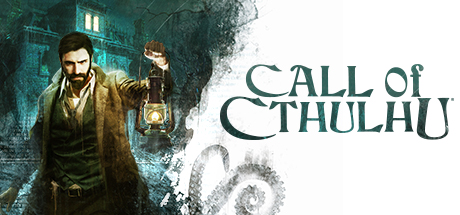
I’m Yoann Drulhe, cinematic artist at Cyanide. I previously worked on the cinematics of Styx: Shards of Darkness, Blood Bowl 2 and I’m currently working on Call of Cthulhu and Space Hulk Tactics.
On Call of Cthulhu, I worked on every aspect of the cinematic creation process, from the first draft to the final cinematic. Therefore, my job included storyboarding, layout, actor direction (we used motion capture to animate our characters), integrating the animations into the Unreal Engine and finally, lighting.
The main challenge during development came from the variety and number of cinematics shown throughout the game. There’s a lot of different sequences, from the creepy ones to story-driven drama scenes developing the characters’ backstories, more action-filled scenes with multiple characters, as well as many variations in between.
Every cinematic had its own mood and challenges to face, and this was one of the things that made this production so interesting for me.

One of our key missions in creating the game’s cinematics was to be able to express distinctly Lovecraftian, unspeakable elements, and convey the idea of madness. The ambiguity in Lovecraft’s novels is that he never precisely describes what his characters see, leaving his readers free to imagine the most disturbing horrors! It’s not really the same in a video game, because at some point you simply have to see these things - but we tried to make every appearance of a creature from the mythos a special moment.
We had to show these creatures, but we wanted to keep it both scary and mysterious in some way. There are many ways to do that in a cinematic. We can choose to not show it completely until the end, play with the editing and lighting to not see it in its entirety, or keep it out of frame so they don’t see it when they want to see it most! To achieve that, it made sense to take horror movies as references - which was easy for me as horror is one of my favorite genres for cinematography! To take a specific example, it seemed obvious to me to watch Alien again before thinking about a sequence showing the Dimensional Shambler.

It was a very different challenge to show the inner madness of the main character, Edward Pierce, as it escalates gradually throughout. At the beginning of the game, Pierce’s strange mental state is revealed during visions he has, which are dreamlike and ask more questions than they bring answers. In fact, the issue is the same as in fantastical literature: the player must always wonder about what they have seen, and if what they have seen is real or not. To succeed in doing this, we used a variety of specific techniques: very tight editing, intentional editing glitches, camera focal length variations, expressionist lighting, and more. Once again: I was strongly inspired by many movies to get these ideas. I don’t want to list them all, but I can’t avoid talking about the dream sequences in Shutter Island, and the movie Jacob’s Ladder by Adrian Lyne. The sound is also really important during these sequences, and they would not work anywhere near as well without the work of our sound designer.

The dream sequence from Shutter Island

The Hospital scene from Jacob's Ladder
We used these same things to show the moments when Pierce goes really crazy, but we were also helped by the work of the actors who made the motion capture, who really understood the intentions of the scenes while shooting and helped to make the sequences what they are now.
I also want to point out something about how we show madness in the game. Apart from Pierce, many of the characters are mad in their own way, and different parts of the game represent madness in many ways. One character evokes the archetype of the mad scientist, while another is an interesting variation of the Frankenstein story - a disgusting but tragic monster, betrayed by those around them and still in love with one that hates them.
https://www.youtube.com/watch?v=jqTI6TDNsrc
One of the important points of the game is that you’re not playing any random character: you’re playing Edward Pierce, a man with his own distinct personality, past and fears. During the gameplay, you’re in a first-person view to maximize the immersion of the player, but during cinematics we’re showing you the character you’re playing and the way he evolves during the events of the scenario.
Many interesting things happened during the motion capture shooting! For example, there is a cinematic in the game that involves a child character. Because this character appears only for a really short amount of time, we chose not to hire a child actor and they were instead hand animated by our team.
The problem was, while shooting, the actors had to interact briefly with this character. Because of that, one of us had to stand in and play as the child. It was not that funny in the moment because we were all focused on the scene, but when we looked at the rushes afterward, it was a very strange sight!
Stay tuned for more Devblogs soon! Call of Cthulhu releases for PlayStation 4, Xbox One and PC on October 30. Digital and retail preorders are available on PC and consoles.
https://store.steampowered.com/app/399810/Call_of_Cthulhu/
